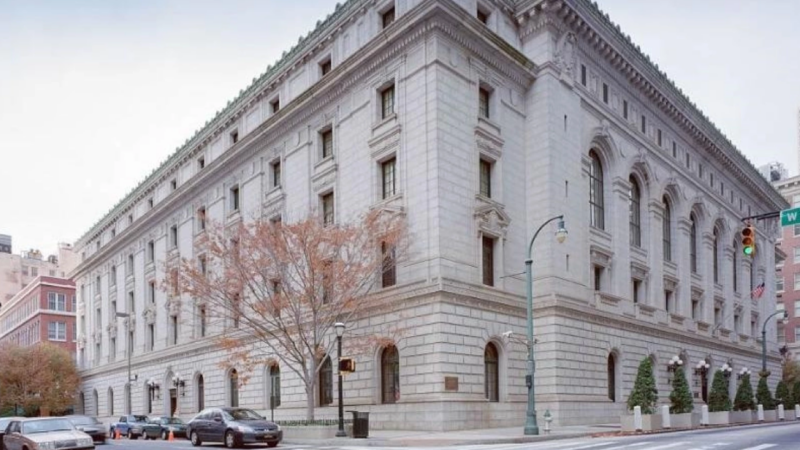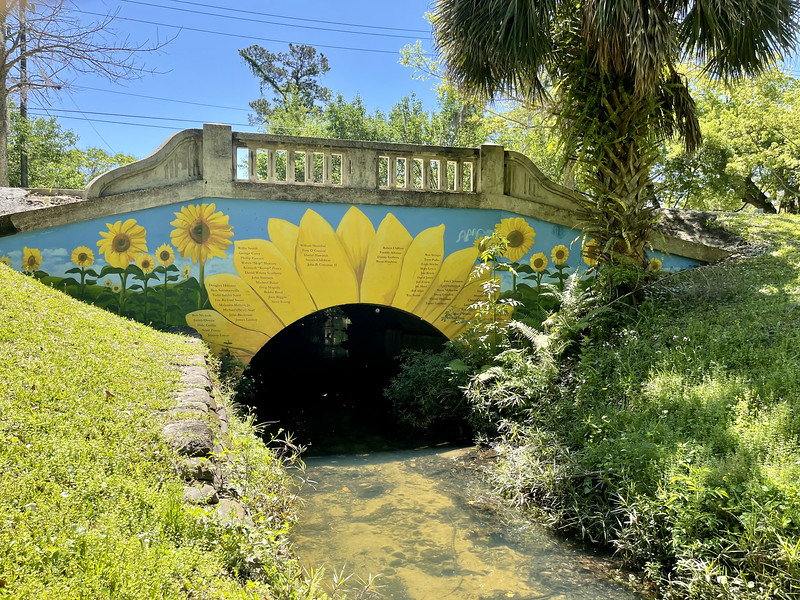
For more than a century, Northeast Florida has been an epicenter of passenger rail operations in the state. Fifty years after the closure of the Jacksonville Terminal, several former passenger railroad depots can still be found across our landscape. Here are 10 historic train stations that stand today.
1. A. Philip Randolph Regional Multimodal Transportation Hub
Palatka

Located at 220 N. 11th St., Palatka Station was built in 1908 for the Atlantic Coast Line Railroad. Added to the National Register of Historic Places in 1988, the Richardsonian Romanesque-style building originally served as a union depot for the ACL, Florida Southern Railway and the Georgia Southern and Florida Railway. Now known as the A. Philip Randolph Regional Multimodal Transportation Hub and served by Amtrak, it is one of only two active passenger railroad stations in Northeast Florida.
2. Callahan Depot
Callahan

Located at 45383 Dixie Ave. in Callahan, the Callahan Depot has been moved four times for varying reasons since it was built in the 1880s. The depot was originally built in 1881 to serve as a freight depot, adjacent to an existing passenger depot that had been constructed to serve the Florida Railroad in 1856. Sometime after 1911, the original passenger depot was destroyed by fire. As a result, a ground-level passenger and clerk’s office was added to this structure. Today, the Callahan Depot houses the Greater Nassau County Chamber of Commerce and the West Nassau Historical Society.
3. Elkton Depot
Green Cove Springs

Elkton is an unincorporated agricultural community in St. Johns County, located between St. Augustine and Hastings. During the late 1800s, Elkton emerged as a stop along Henry Flagler’s Florida East Coast Railway. Rail traffic through Elkton declined after the 1925 completion of the Moultrie Cutoff, which shortened the main line south of St. Augustine, bypassing Elkton in the process. The rail line through Elkton was eventually abandoned. The Elkton train station was relocated to the Clay County Historical and Railroad Museum at 915 Walnut Street in Green Cove Springs.
4. Fernandina Beach Railroad Depot
Fernandina Beach

Located at 102 Centre St., the Fernandina Beach Railroad Depot opened in 1899. The depot served Florida’s first cross-state railroad, which was originally incorporated as the Florida Railroad Co. in 1853 with David L. Yulee as president. The Florida Railroad Co. connected Fernandina Beach to Cedar Key on Florida’s Gulf Coast.The depot served as a passenger railroad depot through the 1930s. Today, the historic depot is occupied by the Amelia Island Welcome Center.
5. Florida East Coast Railway Mayport Terminal
Jacksonville Beach

Built in 1900, this structure at 413 Beach Blvd. in Jacksonville Beach is the last railroad depot left at the Beaches. When it was constructed by Henry Flagler, Mayport was an important port for the railroad because it connected coal-burning trains to schooners delivering coal. The Florida East Coast Railway’s line to the Beaches was abandoned in 1932 and later converted into Beach Boulevard. This depot was relocated to the Beaches Museum and History Center in 1981. Other railroad-related buildings at the complex include an old Section Foreman’s house and a vintage 29-ton locomotive once owned by the Cummer Lumber Co.
6. Jacksonville Amtrak Station
Jacksonville

Located at 3570 Clifford Lane in Northwest Jacksonville, the Jacksonville Amtrak Station opened on January 4, 1974, to replace Downtown’s historic Jacksonville Terminal. Originally, the station was served by eight daily trains. Budget cuts over the years have resulted in the number of daily trains being reduced to two. Nevertheless, in operation for 49 continuous years, the Amtrak Station is the largest active passenger railroad station in Northeast Florida.
7. Jacksonville Terminal
Jacksonville

A Florida anomaly, the massive Neoclassical Revival–style Jacksonville Terminal was designed by New York-based architect Kenneth M. Murchison. His first major commissions were for railroad stations for the Pennsylvania Railroad. Among the stations he designed are the Delaware Lackawanna Station in Hoboken, New Jersey; both the Lackawanna Terminal and the Lehigh Terminal in Buffalo, New York; and Penn Station in New York City. Jacksonville’s $2.5 million terminal quietly opened its doors one minute after midnight on November 17, 1919.
During its heyday, it was the largest passenger railroad station in the South and served as an official gateway to worldwide travelers entering Florida, handling as many as 20,000 passengers and 200 trains each day. Over the decades, it served all trains coming out of or going to South Florida, and many presidents starting with Warren Harding passed through either the concourse or its platforms. Traffic peaked in 1944, when nearly 40,000 trains passed through the terminal, carrying nearly 10 million passengers.
By the end of 1973, passenger rail operations at the terminal had been reduced to a handful of Amtrak employees and two tracks for passenger trains. On January 3, 1974, Amtrak 93, formerly the Seaboard’s Floridian, became the last passenger train to use the Jacksonville Terminal on its way to St. Petersburg, Florida. Following its closure, the train station at 1000 Water St. was converted into the Prime F. Osborn III Convention Center.
8. Orange Park Depot
Orange Park

Located at 727 Kingsley Ave., 14 miles from Downtown Jacksonville, the Orange Park Depot was constructed in the early 1900s by the Atlantic Coast Line Railroad. Built to serve the community of Orange Park, passenger service at the station remained active until the 1960s when it transitioned from a regular stop to a flag stop. Following its closure, the building was used as offices, shops and even a restaurant. In 1993, it became a home for the Georgia 300, a privately owned refurbished vintage railcar that was built in the 1930s and maintained by G&LM Services. Celebrity passengers who have used the Georgia 300 include Presidents Barack Obama, Joe Biden and Bill Clinton.
9. St. Augustine Train Station
St. Augustine

This building at 3313 U.S. Highway 1 N. was considered the prototype for all Florida East Coast Railway train stations when it opened in the late 1950s. FEC railroad labor strikes beginning in 1963 led to passenger rail service being discontinued for good on July 31, 1968. Since that time, the St. Augustine train station has been used for storage.
10. St. Nicholas Depot
Jacksonville

Around 1900, the Florida East Coast Railroad extended a rail line from South Jacksonville to the beach and north to Mayport. The Beaches rail line included five or six depots, including one in St. Nicholas. During the Great Depression, in 1932, the railroad abandoned the line. Eventually, the county acquired the right-of-way and created Beach Boulevard. In 2005, the city of Jacksonville relocated a small St. Nicholas depot from Linden Avenue to what is now known as St. Nicholas Train Station Park at 2564 Atlantic Blvd.







